The Rolex Explorer II Polar 16570, One of the Greatest Youngtimer Watches Around
Blending cool vintage-ish looks with modern features... the best of both worlds.
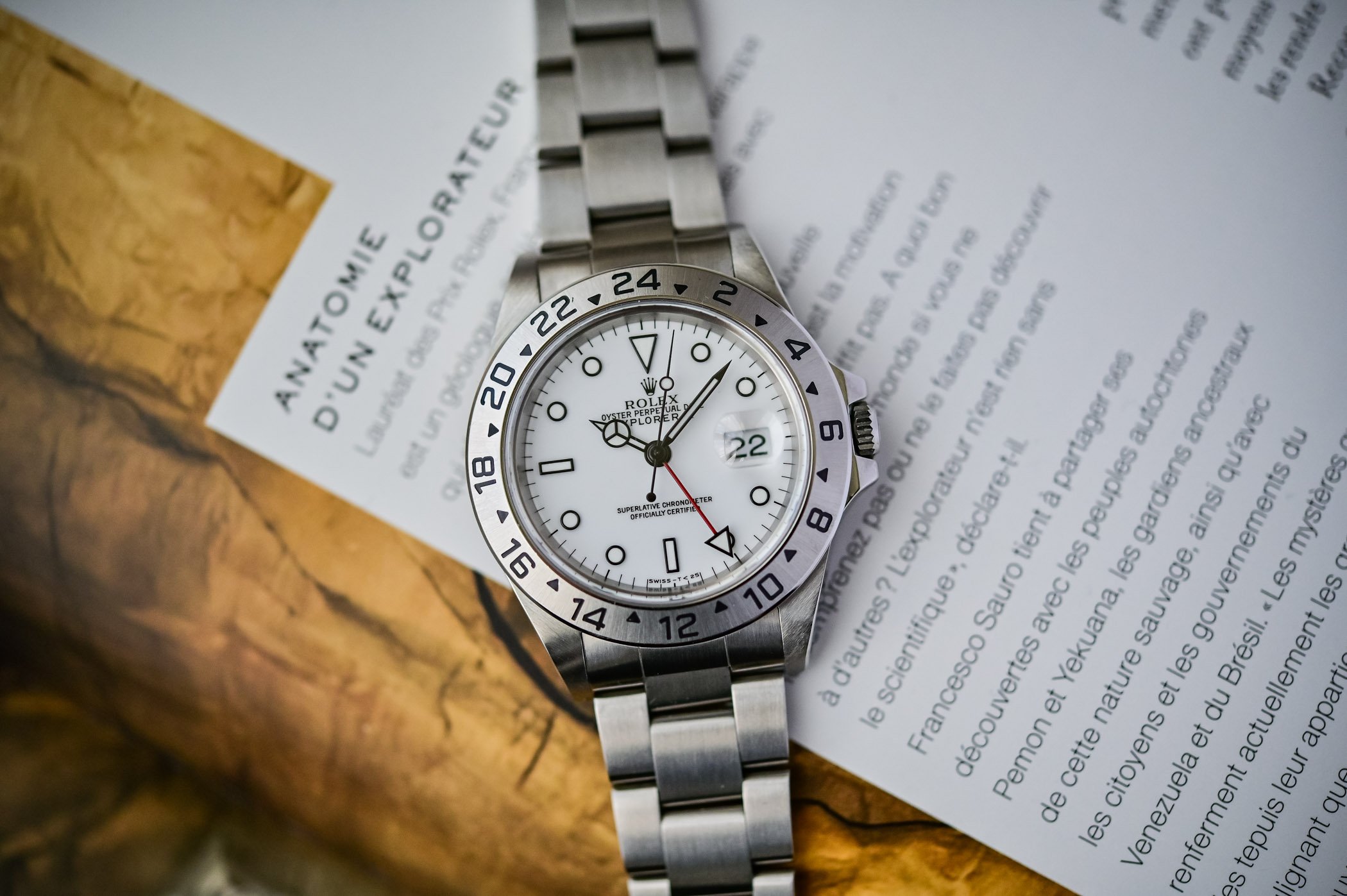
Jump in for a new instalment of The Collector’s Corner. In this column, we talk about youngtimer watches, models produced during the 1980s and 1990s, which blend cool design, modern features, reasonable proportions and, for most of them, a relatively accessible price. We’ve already talked about various models, from a perpetual calendar to a high-end chronograph and a pair of robust, instrumental IWC watches. But we’ve never focused on Rolex. The 1980s and 1990s were a time of changes for the Crown, moving from instrument/professional models to luxury sports watches. But Rolex didn’t move from matte dials and aluminium bezels to glossy dials and ceramic bezels in a single step. In between the now-unattainable vintage watches and the unavailable modern models are some of the best watches on offer, mixing toolish elements with modern features. And one of the greatest examples is the Rolex Explorer II reference 16570.
Such watches are often referred to as transitional models or watches that mark the evolution from classic vintage models with professional orientation to the current line-up with a strong focus on luxury. We’re talking about watches produced by Rolex during the last two decades of the 20th century, watches that are often undervalued and somewhat overlooked by a large segment of the collecting community. Yet, these watches offer great horological content, superior reliability and resistance with a design and proportions that are not that far away from the most desirable vintage models. The transition from the classic vintage models with synthetic crystal, painted matte dials, aluminium bezels and folded bracelets to today’s watches with larger cases, glossy black dials, gold applied markers, sapphire crystal, ceramic bezels and overly engineered bracelets and clasps has been gradual. And this is where the beauty of youngtimer watches can be experienced.
This is a topic we’ve already touched on in the past when we looked at the Rolex Explorer 14270. We’ll now look at a watch from the exact same era, with the same overall spirit, from the same collection… And that is the Rolex Explorer II 16570, and specifically the Polar version that I believe is the most desirable of them all.
Brief history of the Explorer II
Like most of the names Rolex selects for its watches, the Explorer truly speaks for itself. First seen in 1953, the watch was, like all other members of the professional collection, a purpose-built timepiece created for explorers, mountaineers, alpinists and pioneers of all sorts. In short, a robust, no-nonsense watch with excellent legibility.
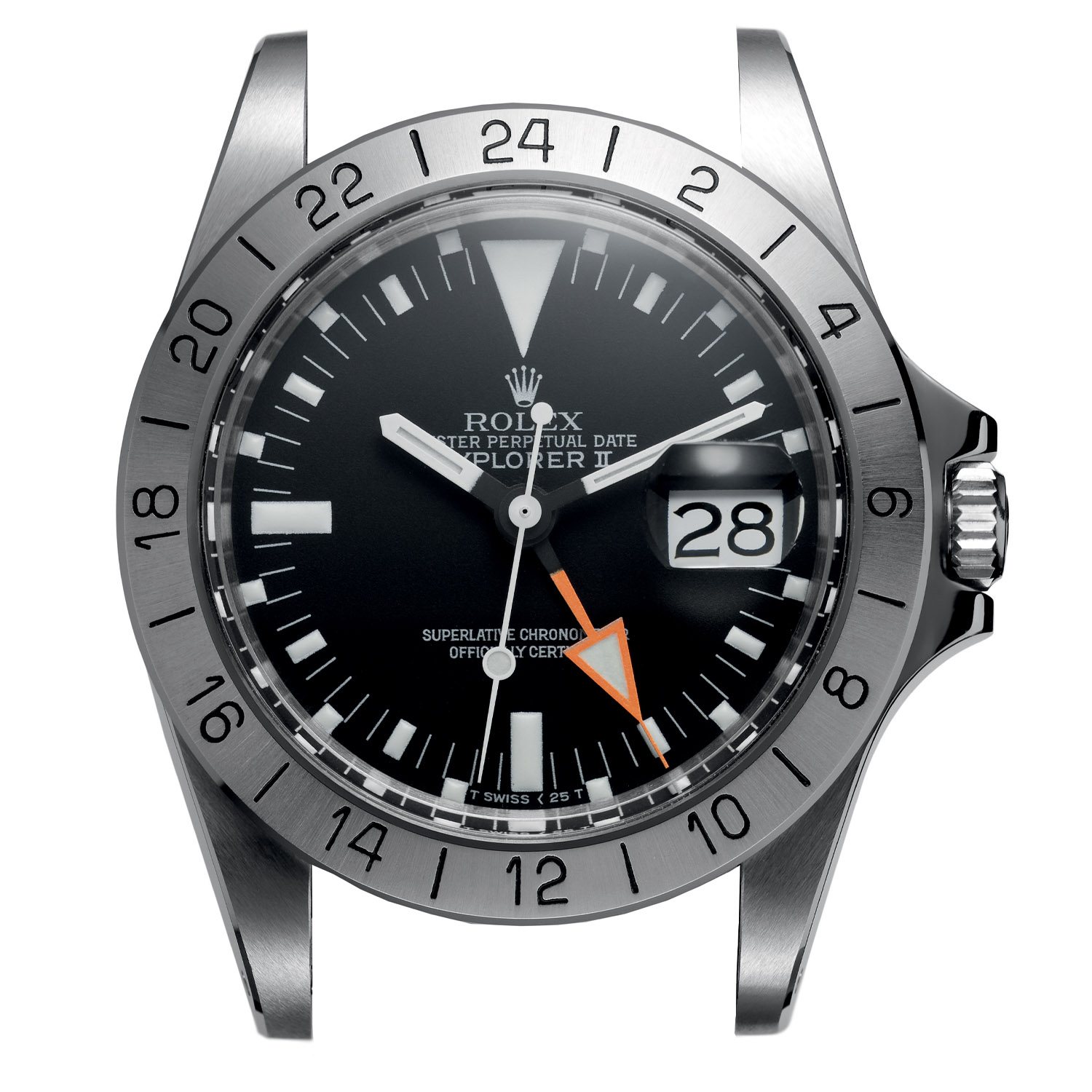
In 1971, Rolex introduced another Explorer watch, the Explorer II, a watch that didn’t replace the initial model but sat alongside it in the collection. And if the first one was already focused, the Explorer II was one of the most niche models of the Crown. With its larger and even more robust case, and mainly the addition of a 24h bezel and hand, the Explorer II was destined for adventurers in conditions where discerning night from day was impossible – think about mine explorers or speleologists. However, a good point was that the watch appeared to be usable in different conditions.
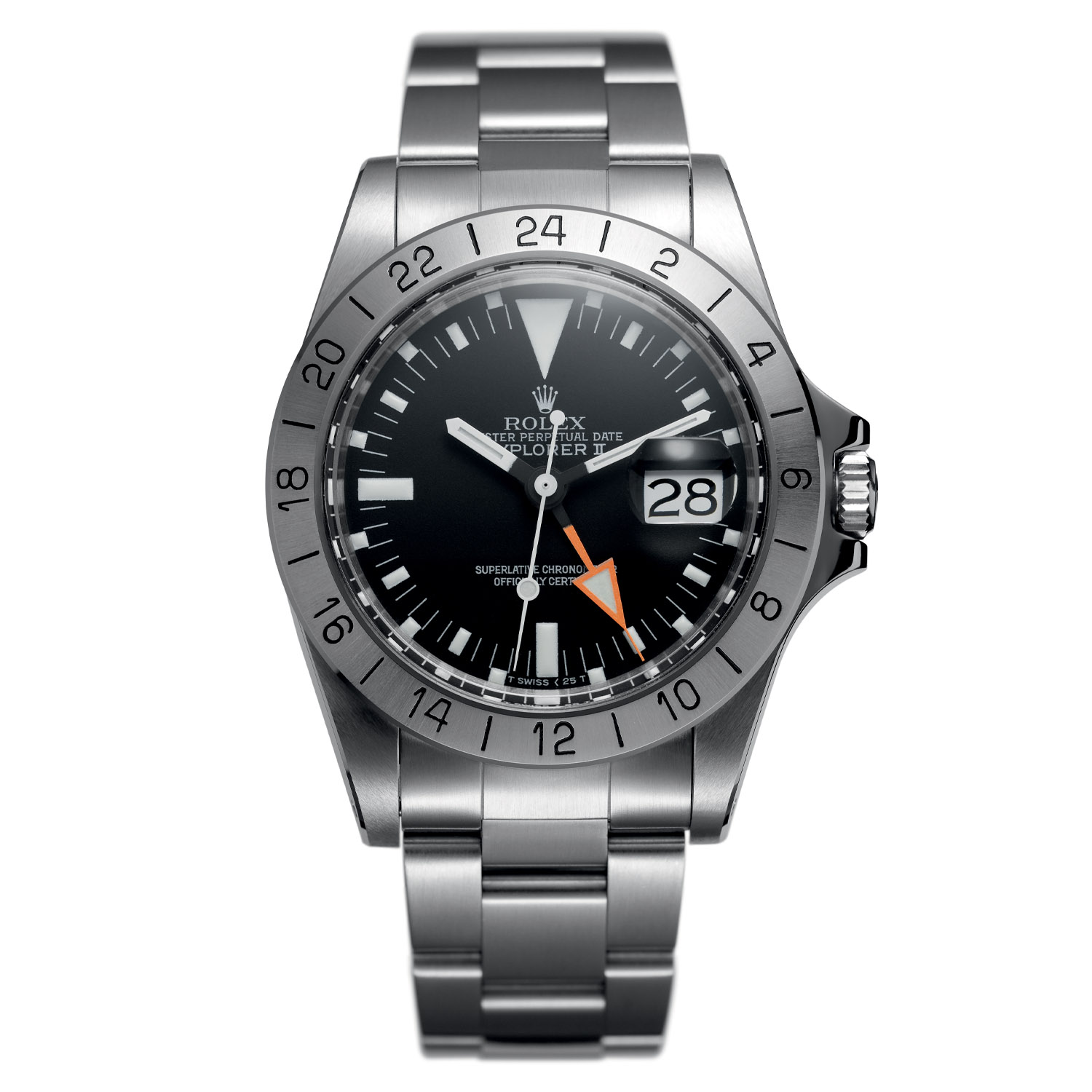
The first Rolex Explorer II watches were launched in 1971, under the reference 1655. It was equipped with a 40mm stainless steel case and, its main feature, a fixed radial-brushed steel bezel engraved with a 24h scale; the fact that it was fixed differentiated it from the GMT-Master. Working in conjunction with the oversized central GMT hand, AM and PM times could be easily differentiated. Important to note, the Explorer II 1655 models are not dual-time watches since the 24-hour hand is coupled to the traditional hour hand. It is solely a 24h indication. The first iterations of the 1655 had an orange 24h hand; later models featured a red one. Another very distinctive feature of this first generation was its dial with painted tritium markers, including an oversized triangle at 12 o’clock – a layout that was unique to the 1655. Inside was the Rolex calibre 1575, the same movement as contemporary GMT-Master watches. With small variations over the years, this watch had a long production run from 1971 to 1985.

The first evolution of the Rolex Explorer II came in 1985, with the reference 16550, marking the most significant update of this model. Differences were both technical and design-related. The movement, for instance, was now the calibre 3085, which allowed the 24h hand to be set independently. This meant that the Explorer II became a dual time zone watch – while the GMT-Master became a triple time zone watch. The case remained at 40mm, with a sapphire crystal, but the bezel, still fixed and radially brushed, was revamped with inverted triangular markers and bolder numerals. Finally, the dial, which was available in black and white, became more conventional, in line with other Rolex sports watches – meaning Mercedes hands, a smaller 24h hand and triangular, round, and rectangular tritium-filled hour markers. And so the watch became more of a robust globetrotter’s watch, less focused on speleology and cave exploring. The Rolex Explorer II 16550 was discontinued in 1989.

The next model is known as the Explorer II 16570 and was launched in 1989. Evolutions were soft, with most of the features found on the 16550 retained. It first appeared with a new movement, the Calibre 3185, and then with its evolution, the calibre 3186. The white “polar” dial was equipped with black-outlined hands and markers (no longer silver coloured). Apart from the evolution of the movement, the addition of the Rolex-engraved réhaut and a change from tritium to LumiNova and then SLN, the 16570 remained the same for 22 years – available with a black or white dial.
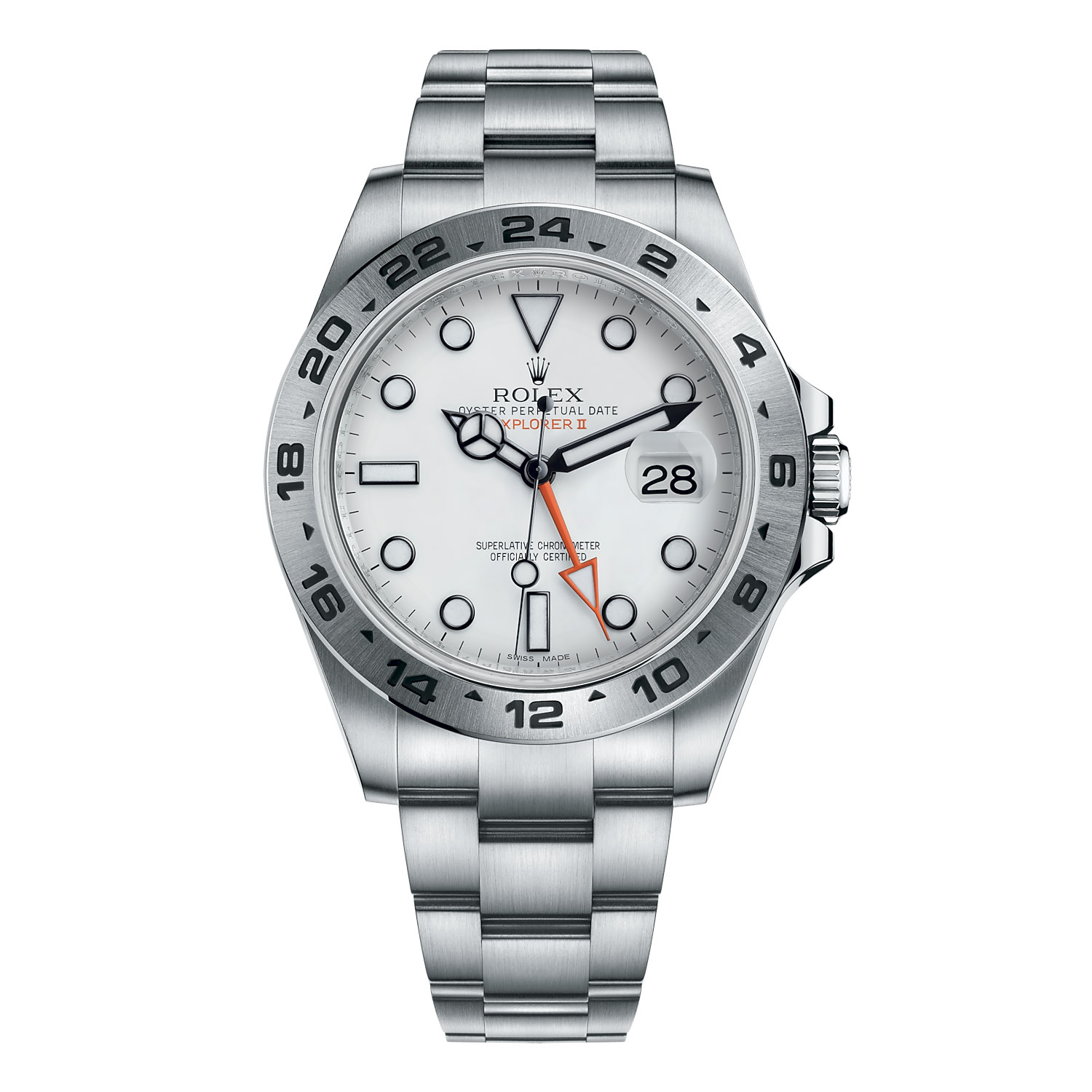
The next big update on the Rolex Explorer II occurred in 2011 with the reference 216570. Coinciding with the 40th anniversary of this collection, the watch paid a discreet tribute to the earliest generation with an oversized orange 24h hand. The case became larger, at 42mm, the radial-brushed bezel remained fixed but with even bolder markings. Mechanically speaking, this 216570 was fitted with calibre 3187, again with an independent dual time hand. Following the evolution of the case, the dial became ‘Maxi’ with oversized luminous markers and hands – like, really oversized. The white model retained the black-outlined markers while the black featured white gold markers. And like all its predecessors, it was water-resistant to 100 metres.

The latest update to the Rolex Explorer II occurred last year and was a highly conservative evolution of the model. Still, most of the parts in this Explorer II 226570 are new, despite the strong resemblance to the previous generation. The case, still measuring 42mm in diameter, has been reworked with slimmer lugs, a larger bracelet and slightly redesigned crown guards. The radially brushed steel bezel with a 24h scale remains untouched. The dials, either white or black, show some light evolutions too. The black dial only differs with its fully polished hands (no more “floating” partially black hands). The white dial now benefits from white gold markers and hands coated with matte black PVD (not glossy), all with an optimised Chromalight display. The most noticeable update is the Calibre 3285, shared with the current GMT-Master II collection. It has the Chronergy escapement and 70h of power reserve. The bracelet, larger than before, still features the Oysterlock folding safety clasp and the Easylink comfort extension link.
The basics about the Explorer II Polar 16570
The reference 16570 sits right between the vintage and modern models, taking some of the elements of both generations to produce a fantastic cocktail. On one side, you could go for a first-generation 1655, knowing that it won’t be the easiest to wear on a daily basis. The watch is equipped with a plexiglass crystal, the water-resistance of vintage watches is harder to guarantee, the bracelet can be fragile and tends to have some stretch, and you’ll be wearing a watch that will cost a small fortune (at least 24-26k euros for a nice watch). On the other side of the spectrum, you could go for one of the two modern references, the 216570 or the 226570. Here, you’ll have to deal with a rather massive watch, with all the luxury of modern Rolexes and, of course, with an evident lack of availability.
Right in the middle are two references, the 16550 and the 16570. The first had a short production run and is not the most accessible on the market, nor the most available. Plus, and that is personal of course, I’m not a fan of the 24h scale on the bezel, which I’ve always found a little bit too aggressive in design. This leaves us with the 16570… and don’t think I’m giving you this option as a second-tier choice. In fact, I believe that the Explorer II 16570 could well be the best possible option when it comes to this collection.
What is the Explorer II 16570 all about? Well, simple as it is, it’s a Rolex Explorer from head to toe. In short, it is a watch made for adventure that is resilient enough to withstand almost any environment. It has a fixed 24-hour bezel, a steel case, a shape that makes it unmistakably part of the Rolex professional line-up, an ultra-clean dial – available in white “polar” or classic black – and is equipped with an additional 24-hour hand that was initially made to distinguish day from night, but that can also be set independently, to be used as a dual time watch. It also has many of the features of modern Rolex watches but still has an undeniable retro style and some features that wouldn’t be acceptable anymore in modern watchmaking, giving this watch a certain charm.
Let’s start with the case, which is a classic Oyster shape made of stainless steel with classic features of the professional line, such as the screw-down crown (Twinlock), crown guards, a screwed, plain steel caseback, 100m water-resistance and, in the first concession to modernity compared to vintage watches, a sapphire crystal (no AR coating) with a magnifier over the date. What makes you immediately feel that this watch is somehow “old” is the way the case is finished and shaped. First of all, you’ll notice the angled brushing on the lugs, combined with a thin polished bevel (which was later removed from this reference) and lug holes (also removed later from the 16570).
In the same vein, it’s not a particularly thin watch (about 12mm), but the case is shaped the old way, with a thin central container and most of the thickness absorbed by the domed back. Finally, it still has this overall slenderness that had characterised Rolex watches from the 1960s to the mid-2000s when the so-called “super cases” arrived on the Submariner and GMT-Master II… not to mention the oversized case of the post-2011 Explorer II.
One of the key characteristics of the Explorer II, and the most appealing element of its design, is the bezel. While many professional Rolex models have a contrasting rotating bezel or a smooth steel bezel, the Explorer II 16570 (and the model in general) has a fixed yet textured and graduated bezel. The combination of a radial brushed surface, which plays a lot with the ambient light, and a thin polished bevel on its periphery is particularly appealing – but also extremely fragile in the real world (owners of an Explorer II will know what I mean). The 16570 benefitted from a redesigned 24-hour scale too, with a thinner and more rounded font than what was used on the 16550. The following 42mm references returned to a far bolder font.
Another distinctive aspect of the Rolex Explorer II, at least since its second generation (ref. 16550), is its availability of two dial colours, including a classic black version and the (personal opinion) far more attractive white “Polar” model. Many of the traditional steel professional Rolex watches have black or dark dials. The Polar 16570 comes with a pure white dial, lacquered and with a glossy surface, making it somewhat unique within the collection. This bright, extremely luminous dial is paired with applied markers that feature a thin black contrasting rim, later filled with either tritium (for the first years of production from about 1989 to 1996-97) and later Luminova (Swiss only dials) or Super-LumiNova (Swiss Made dials, until the replacement of this reference).
All inscriptions on the dial are also compact and thin and executed only in black. Again, this reminds you that this present watch isn’t that new anymore and is part of an older collection. The only touch of colour on this watch is the red-lacquered GMT hand, but as you can see, the colour is rather dark and discreet. That being said, legibility is absolutely perfect in all conditions, except at nighttime since the tritium on the present watch has long lost its luminescence. More modern versions with SLN will provide very decent contrast in low light conditions with a fairly large amount of luminescent material on hands and markers.
Inside the case of the Rolex Explorer II 16570 is a well-known pair of movements. The first models were equipped with the Calibre 3185, later replaced by the Calibre 3186 – which became the norm circa 2005. This movement is the same as the one used on the contemporary GMT-Master II, and as such, it features an independent 24h hand and a local hour hand that can be adjusted in one-hour increments. This means that you can use your Explorer II in a traditional adventurer way, with the red hand as a day-and-night indicator, or you can use your watch as a proper traveller’s instrument, displaying an additional time zone.
The Calibre 3185 is an in-house automatic movement with a 50h power reserve and a 4Hz frequency. It was chronometer-certified by COSC and featured 31 jewels. The date jumps instantaneously at midnight and is linked to the local time. The Calibre 3186 is basically the same overall movement with some minor evolutions regarding the date mechanism.
As with most Rolex professional models, the Explorer II 16570 is worn on an Oyster bracelet in stainless steel. Yet some differences can be seen during the production of this watch. For instance, early versions feature simple, folded end-links, while later models were upgraded with solid end-links. Also, earlier models have hollowed middle links, while later models have solid links all around. Another reminder that you’re wearing an older Rolex is that the clasp is (objectively) pretty basic in design and finish, and the micro-adjustment system is the simplest you can imagine. However, this clasp is compact and comfortable.
Why should you consider a Rolex Explorer II 16570?
There are many reasons why the 16570 is such a cool watch and as many reasons for getting one of them in your collection.
Although the Explorer II might not be as iconic and recognisable as a Submariner or a GMT-Master II, it nevertheless remains an emblematic model from the Rolex line-up. Its “niche” status (at least, at Rolex’s scale) makes the Explorer II far more original and less consensual. The same can be said about many design elements, including the white dial (a rarity in the brand’s collection), the fixed bezel and its capacity to be a proper all-rounder, a do-it-all watch that can live with you all day, every day, in pretty much any situation. The presence of an additional time zone is, on a daily basis, a remarkably convenient feature.
Now for the objective reasons. Even from the end of the past century, a Rolex is a Rolex and is built to last. The overall quality of the watch is evident – although compared to a modern model you can see how much the watch industry has evolved over the years. Still, everything is clean, neatly aligned, solid and reliable. And even if it is now more than 30 years old, it’s still a watch you can wear, without fear, on a daily basis or during a weekend adventure trip. If the watch has been properly maintained and serviced, it will retain its COSC precision and water-resistance.
And this is where youngtimers become really great options. If you look at the 16570, you’ll still find some of the classic features of vintage Rolex models, such as decent proportions, a tritium dial, bevelled sides, thin profile and lugs, relatively discreet fonts on the dial, nicely brushed cases and no overload of glossy surfaces. This watch certainly has an instrumental, tool-ish spirit that the modern versions can’t offer anymore. And at the same time, it features most of the necessary securities of a modern watch. To me, this represents the best of both worlds, and the 5-digit Rolexes are, in my books, still some of the best watches made to be worn, used and abused.
The last reason to consider the Rolex Explorer II 16570 is financial. I won’t teach you anything by saying that prices of all Rolex models have skyrocketed recently, reaching incredibly high points for some references way above the EUR 20,000 mark. The 16570 is still one of the few professional models you can get for less than EUR 10,000. I know, half a decade ago, you could have gotten the same watch for a fraction of that price. But if you consider the fact that the Explorer II has been produced in relatively low numbers compared to a Submariner, and that it has true originality, it could even become quite a good investment (even though I hate to talk about such topics when it comes to watches…).

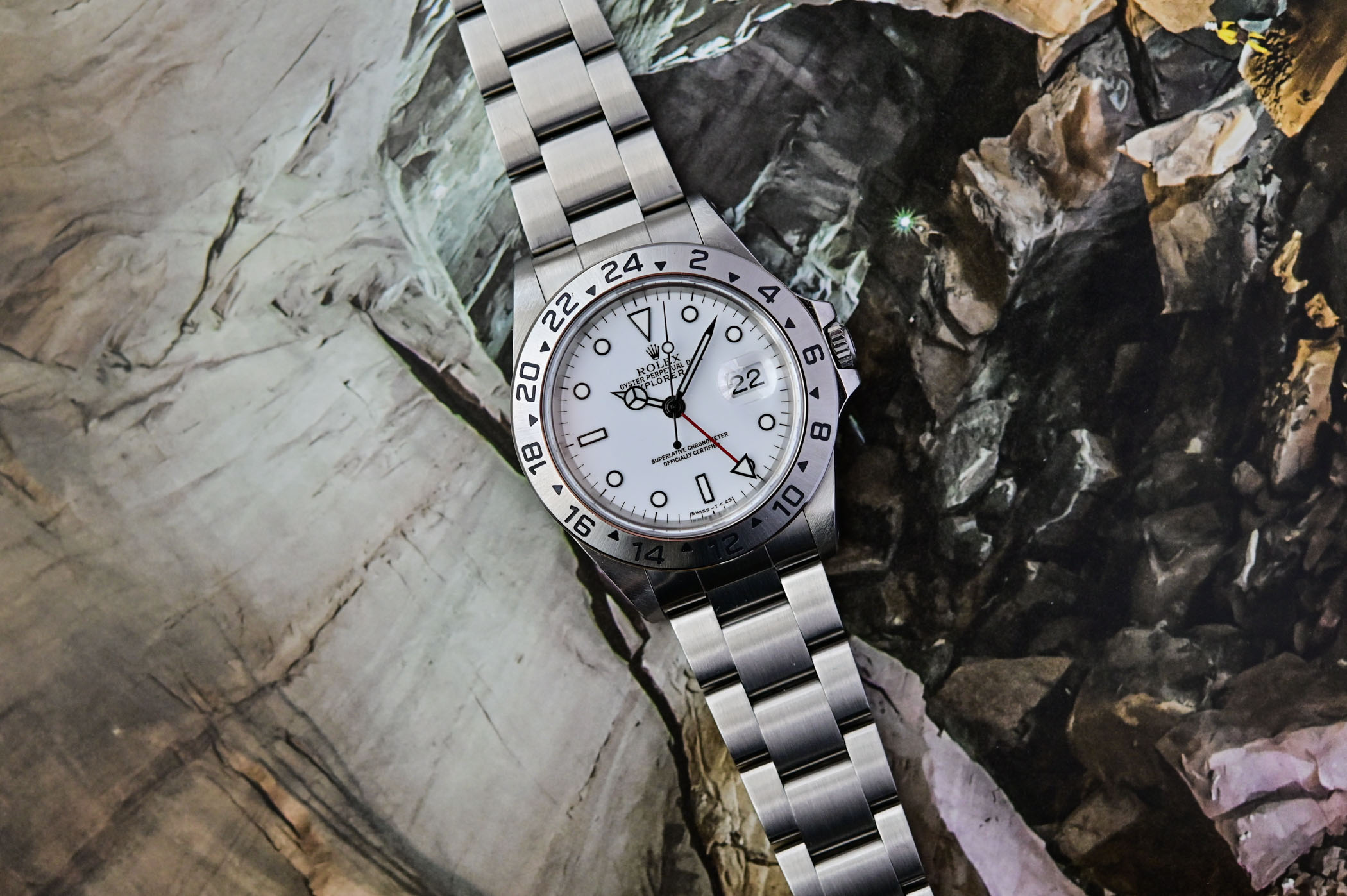
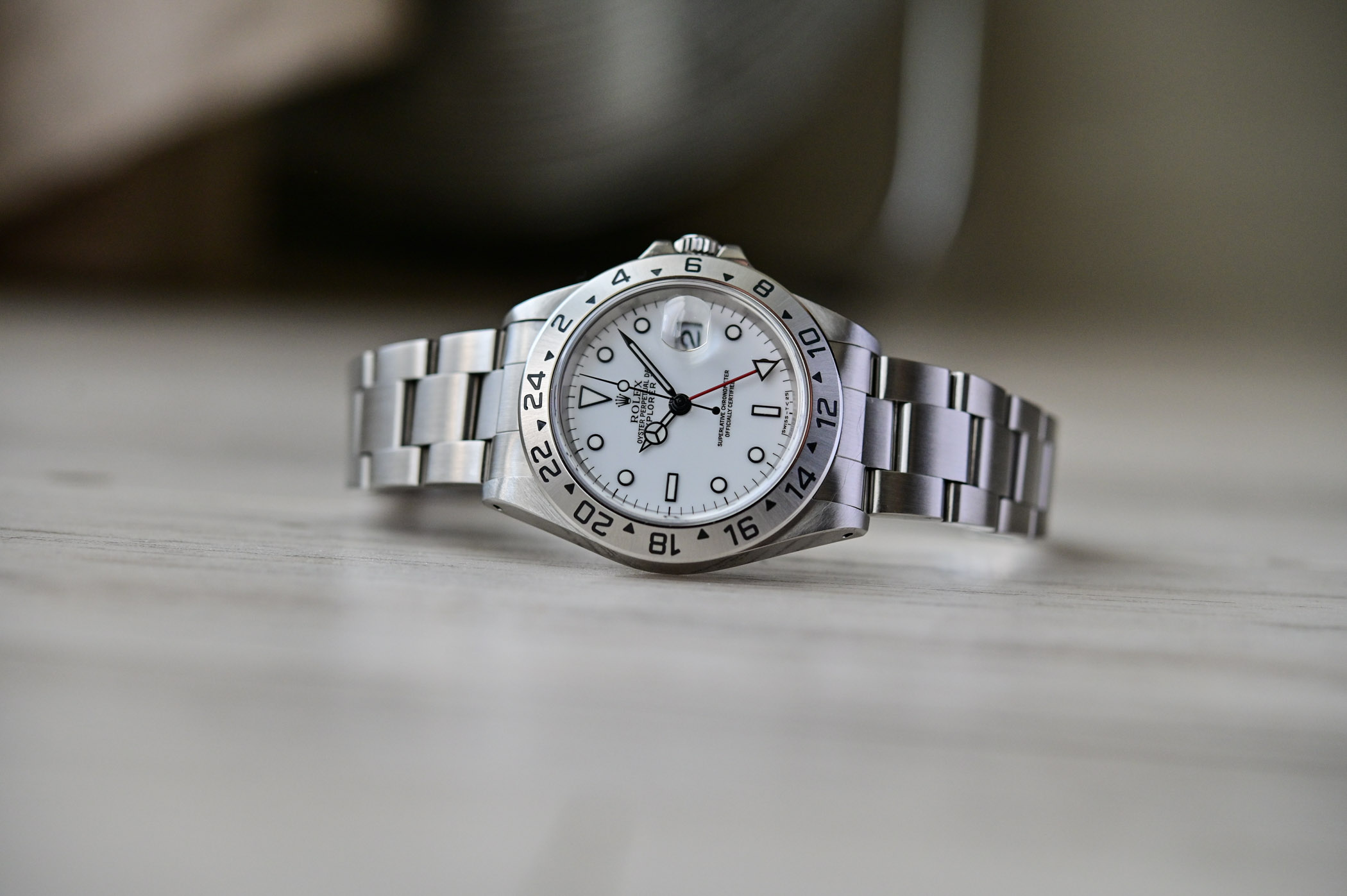

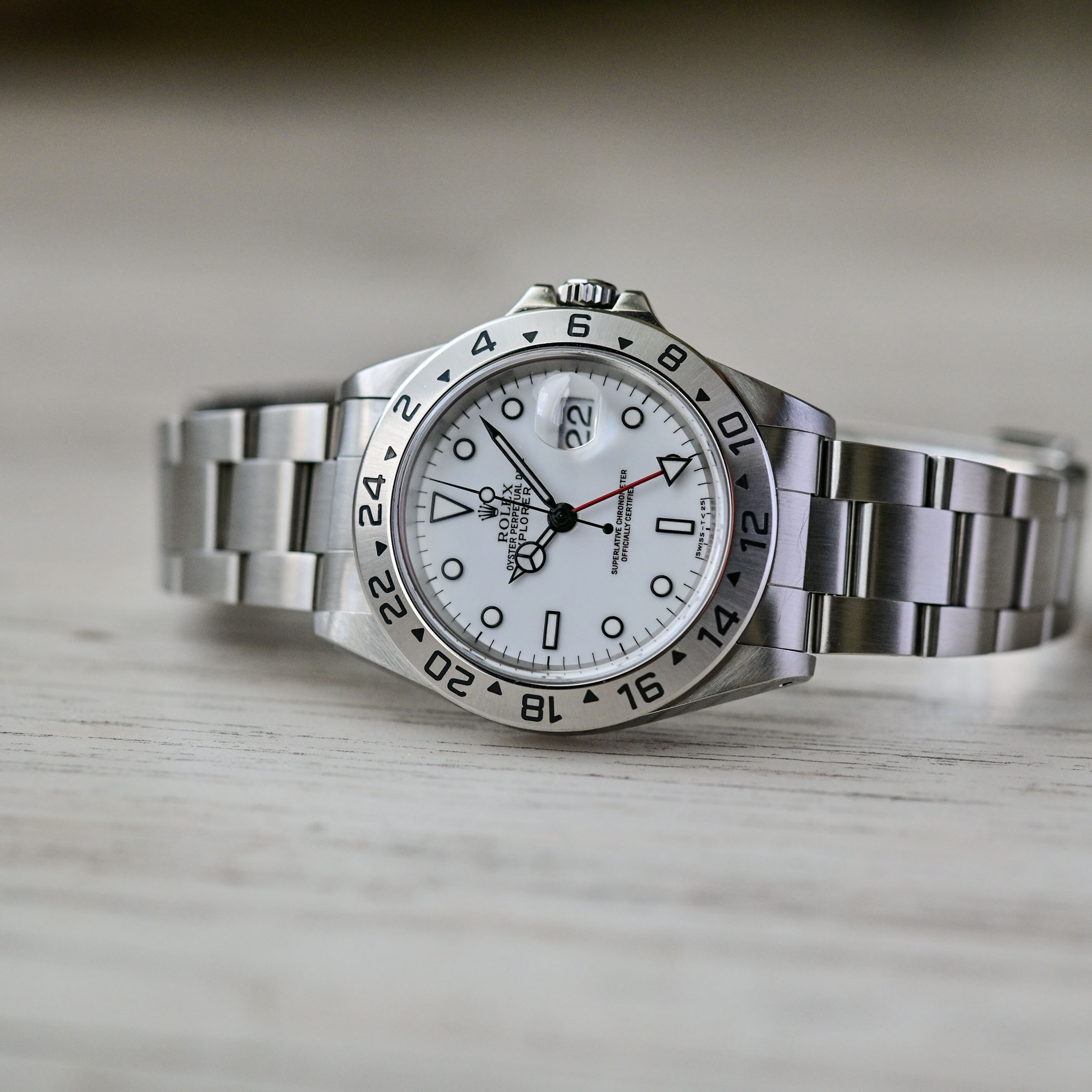
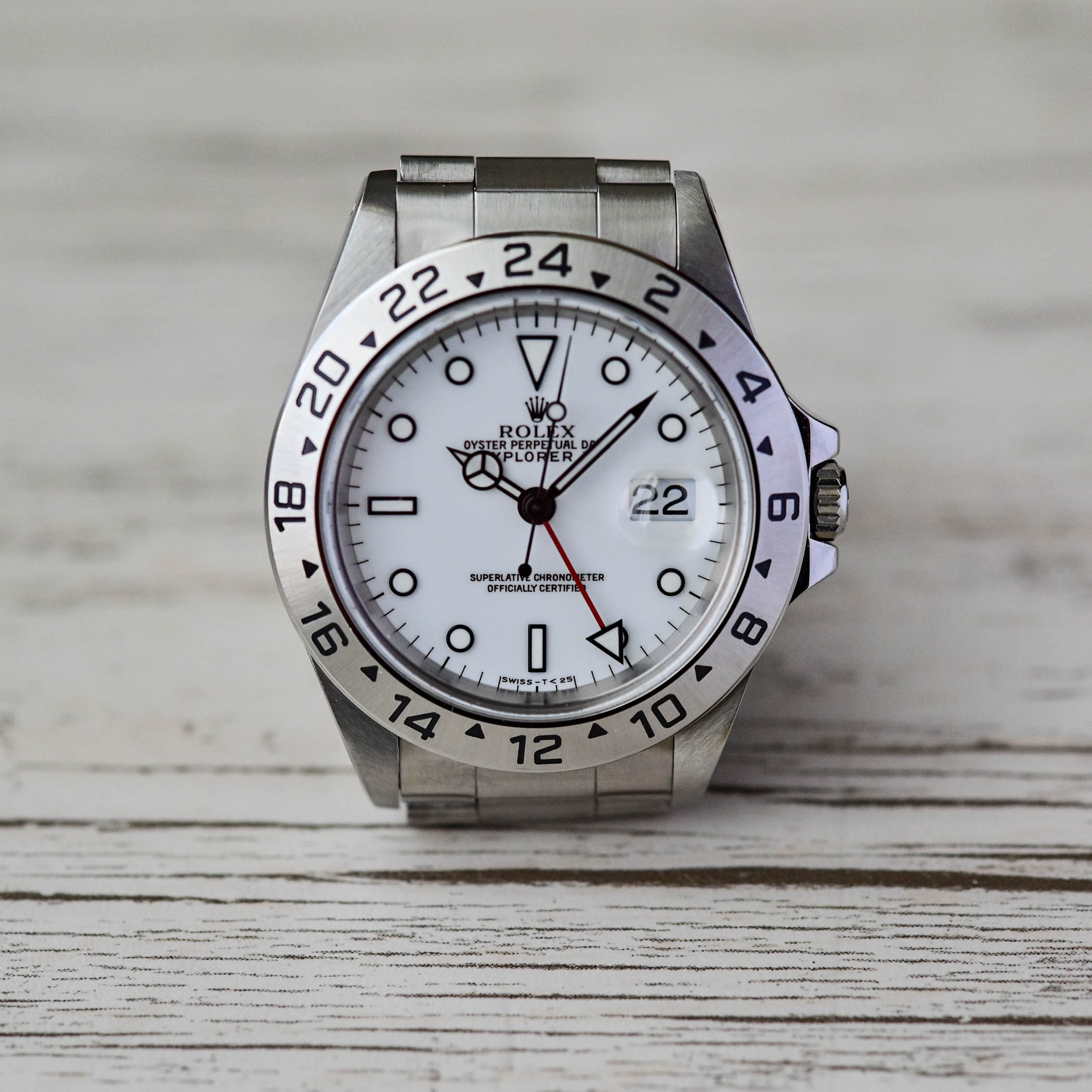
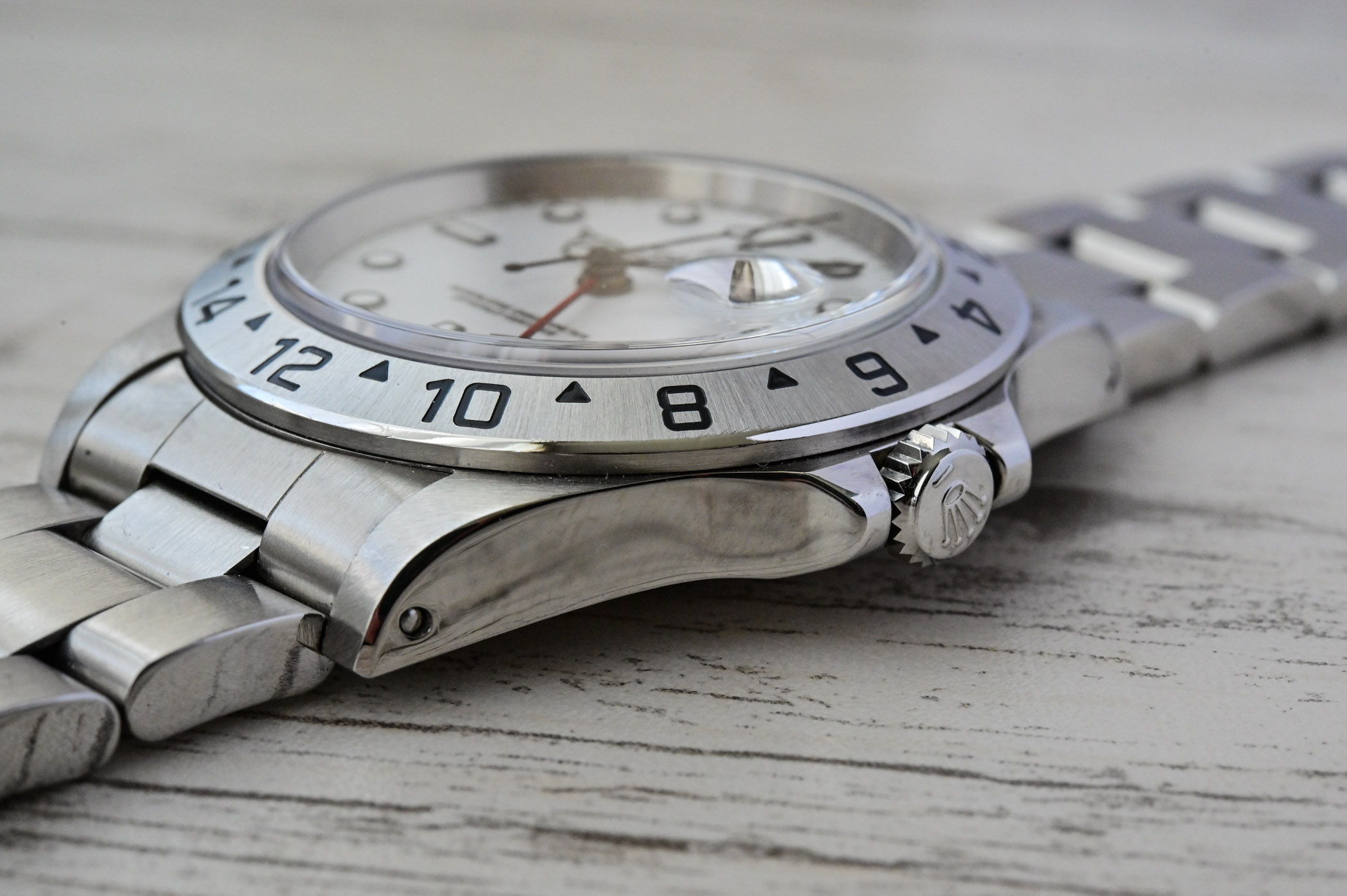
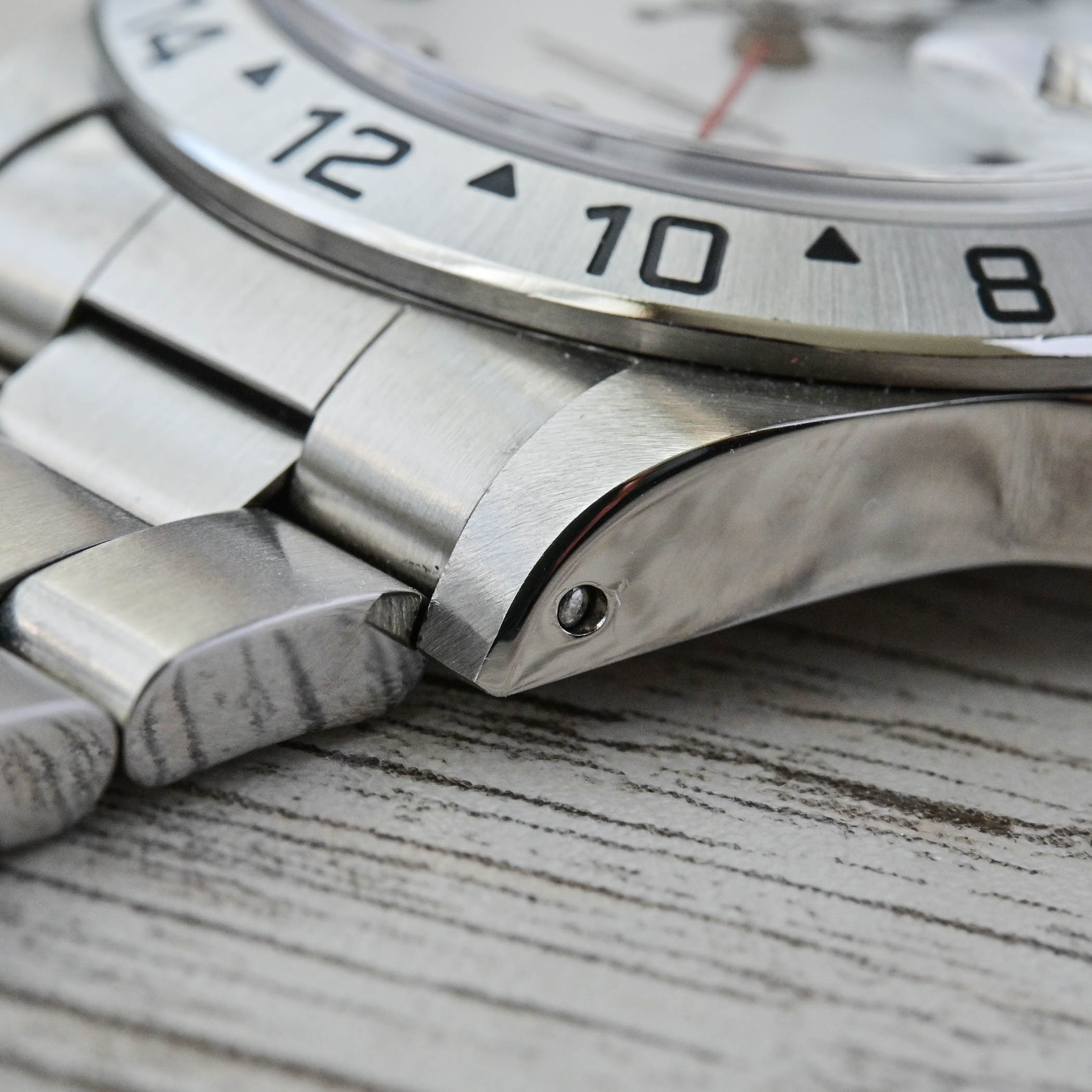

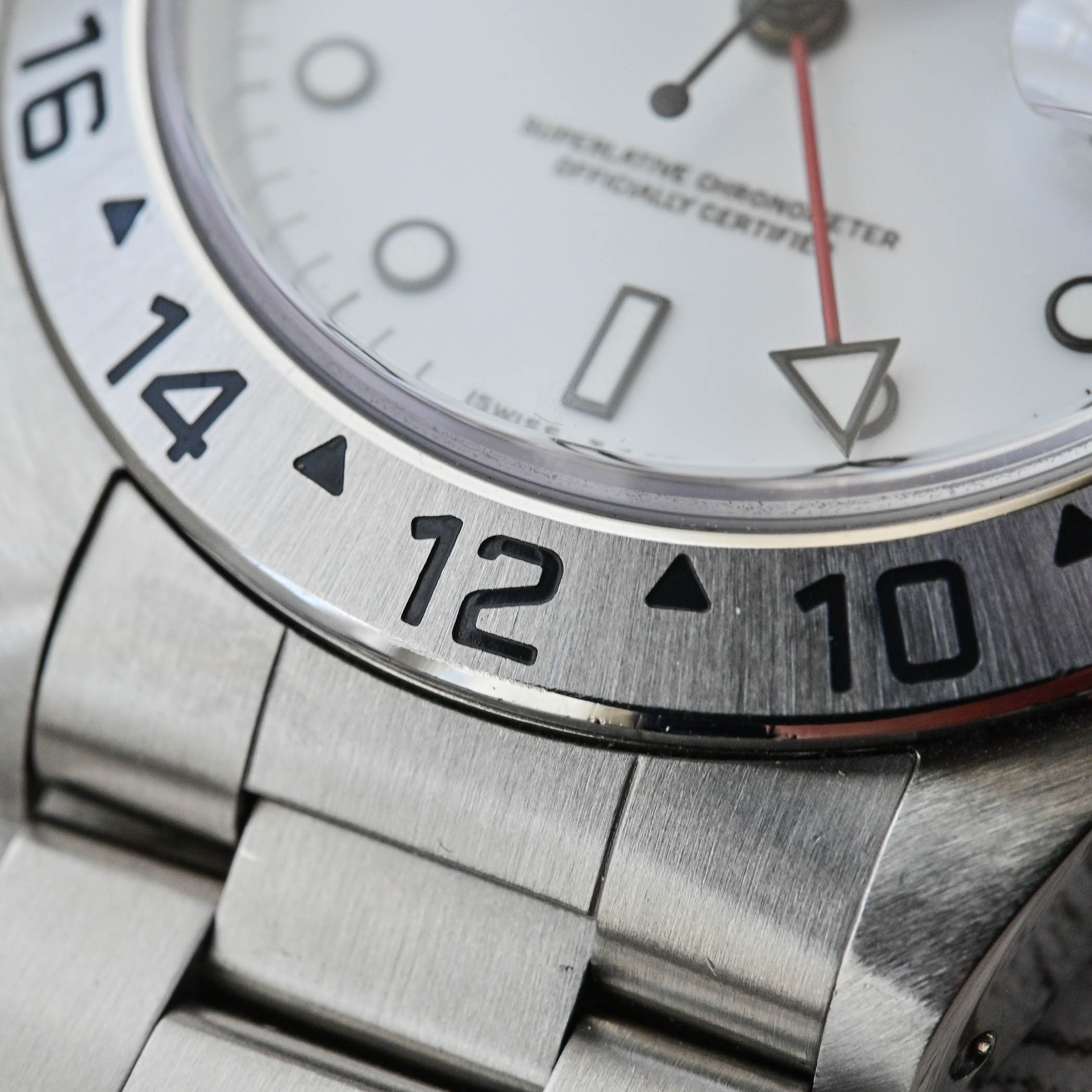
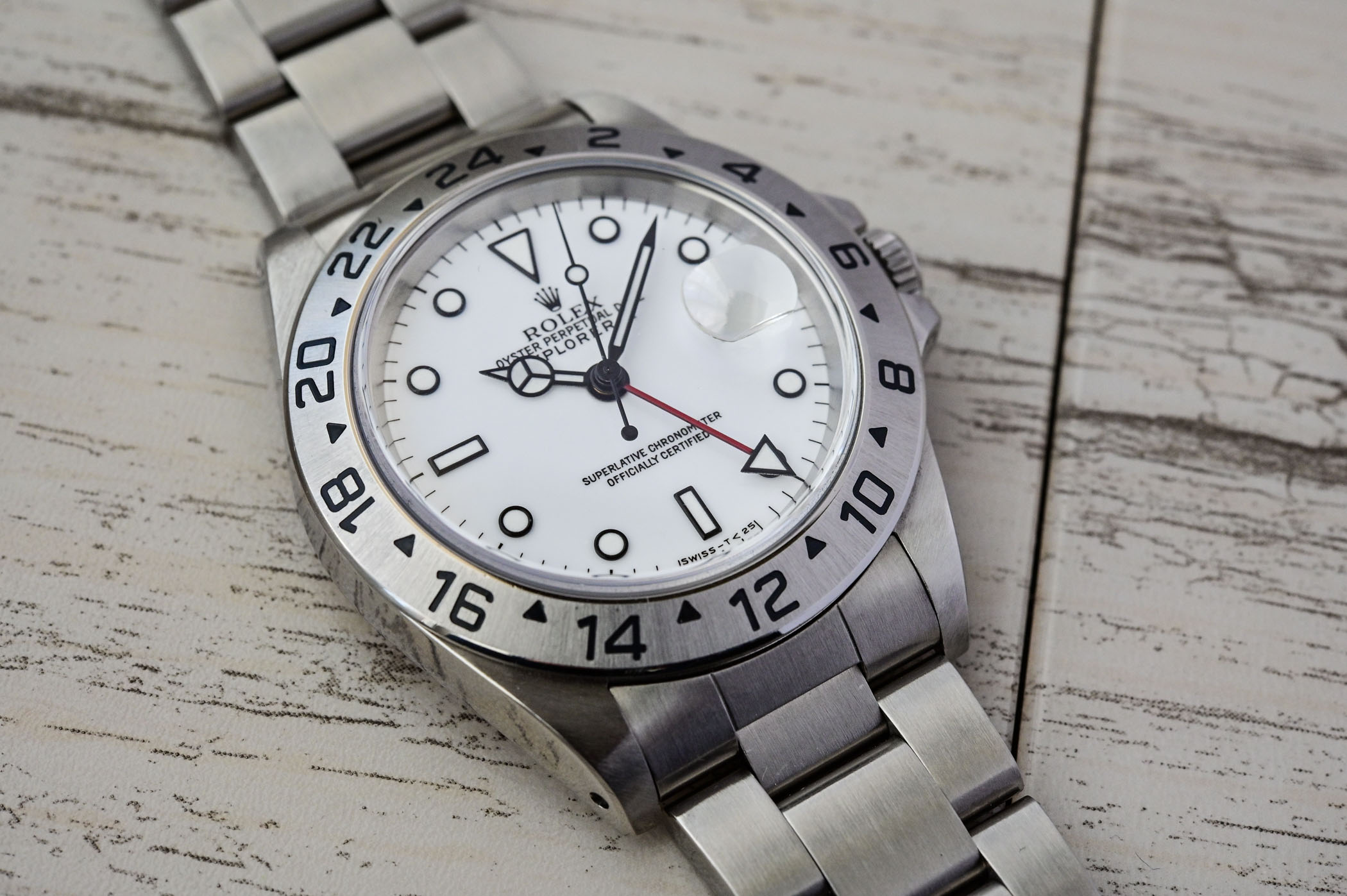
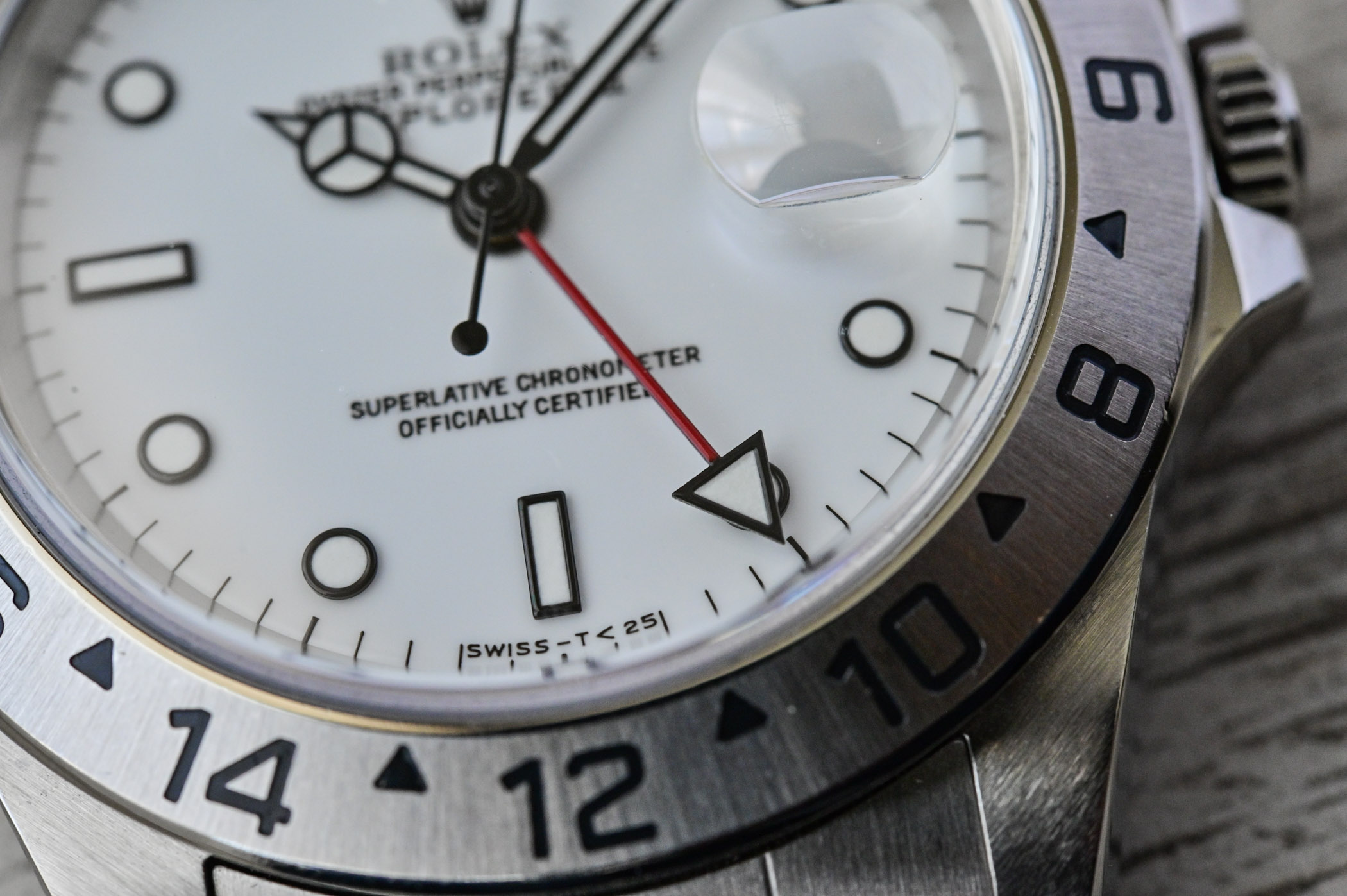

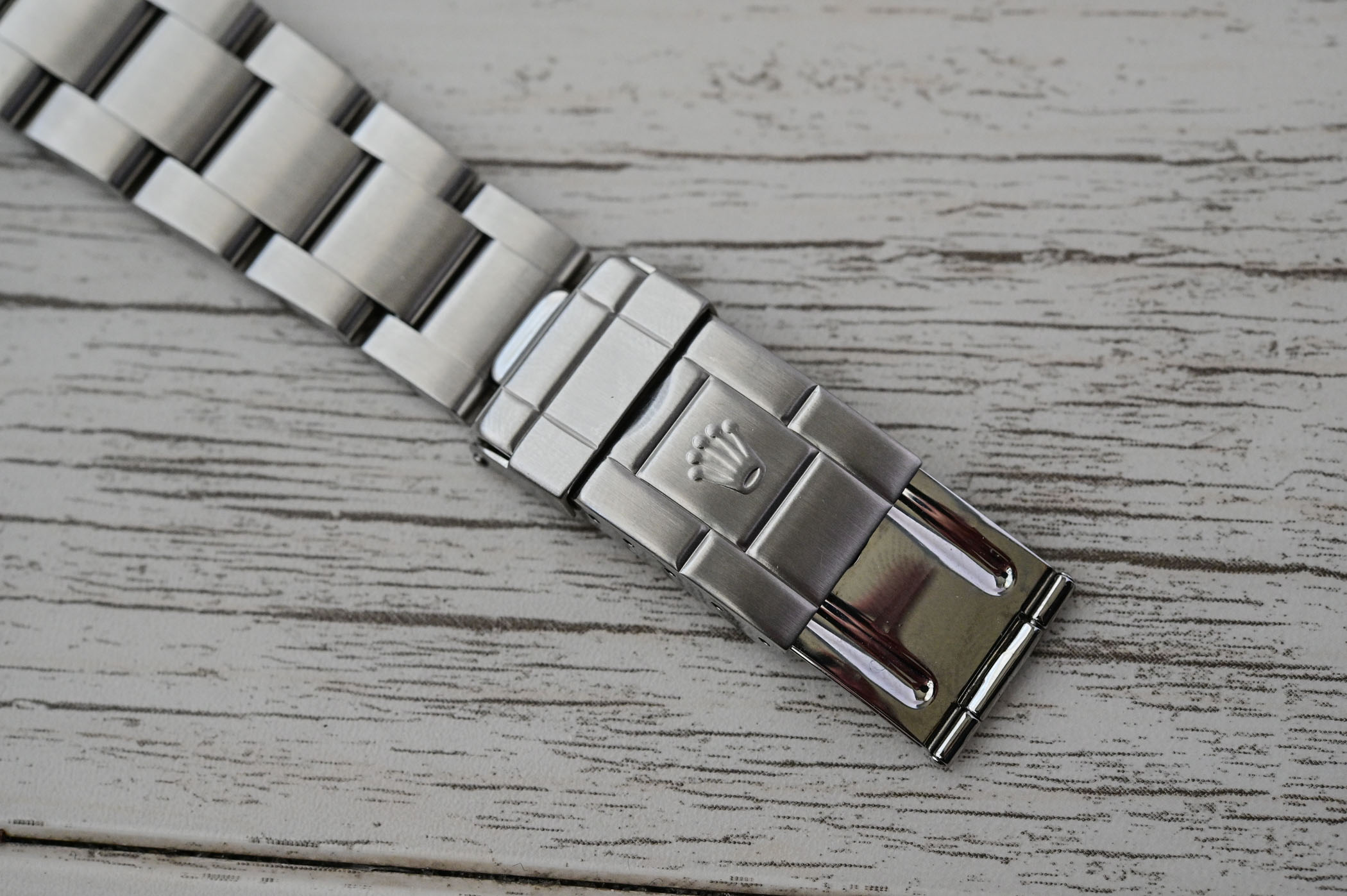


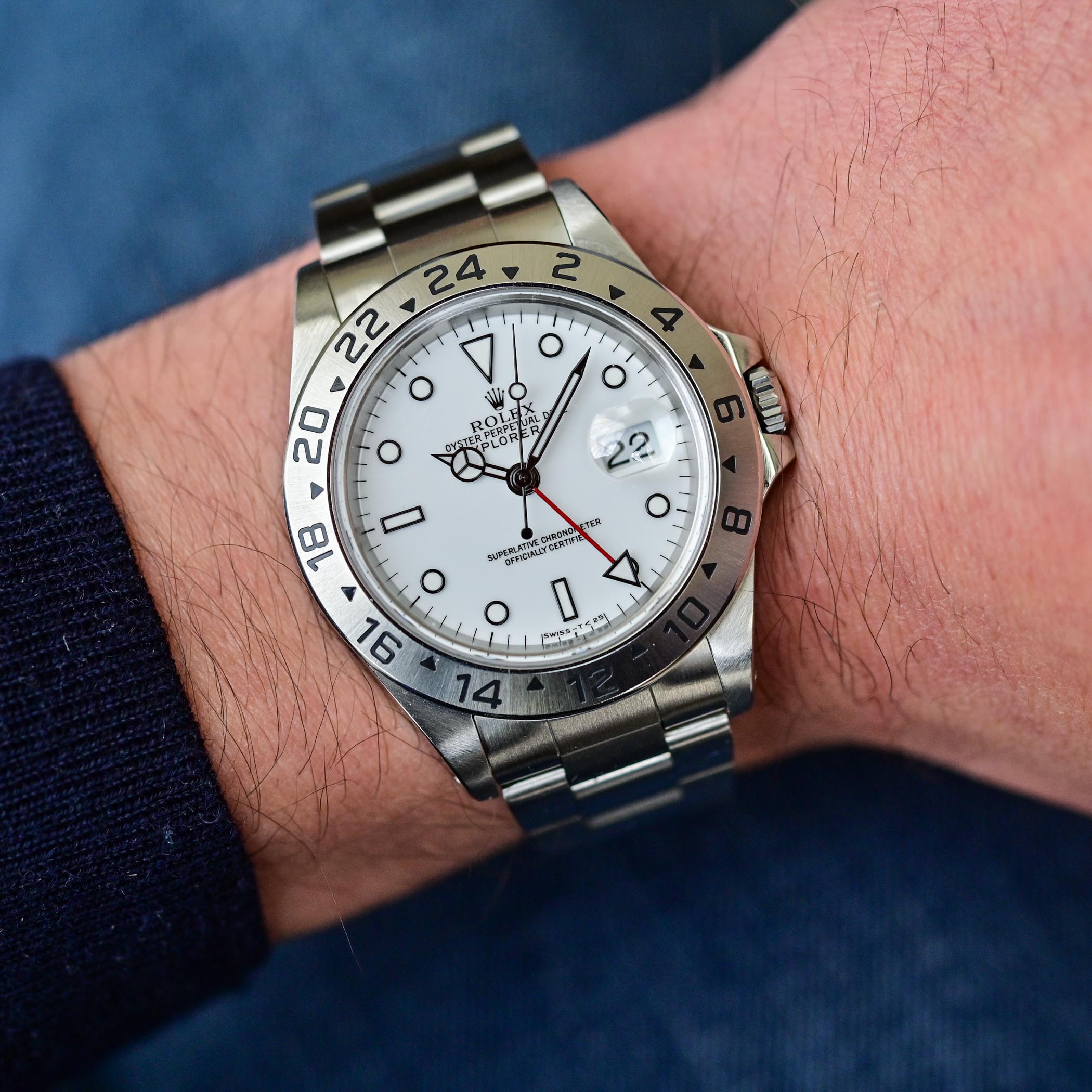
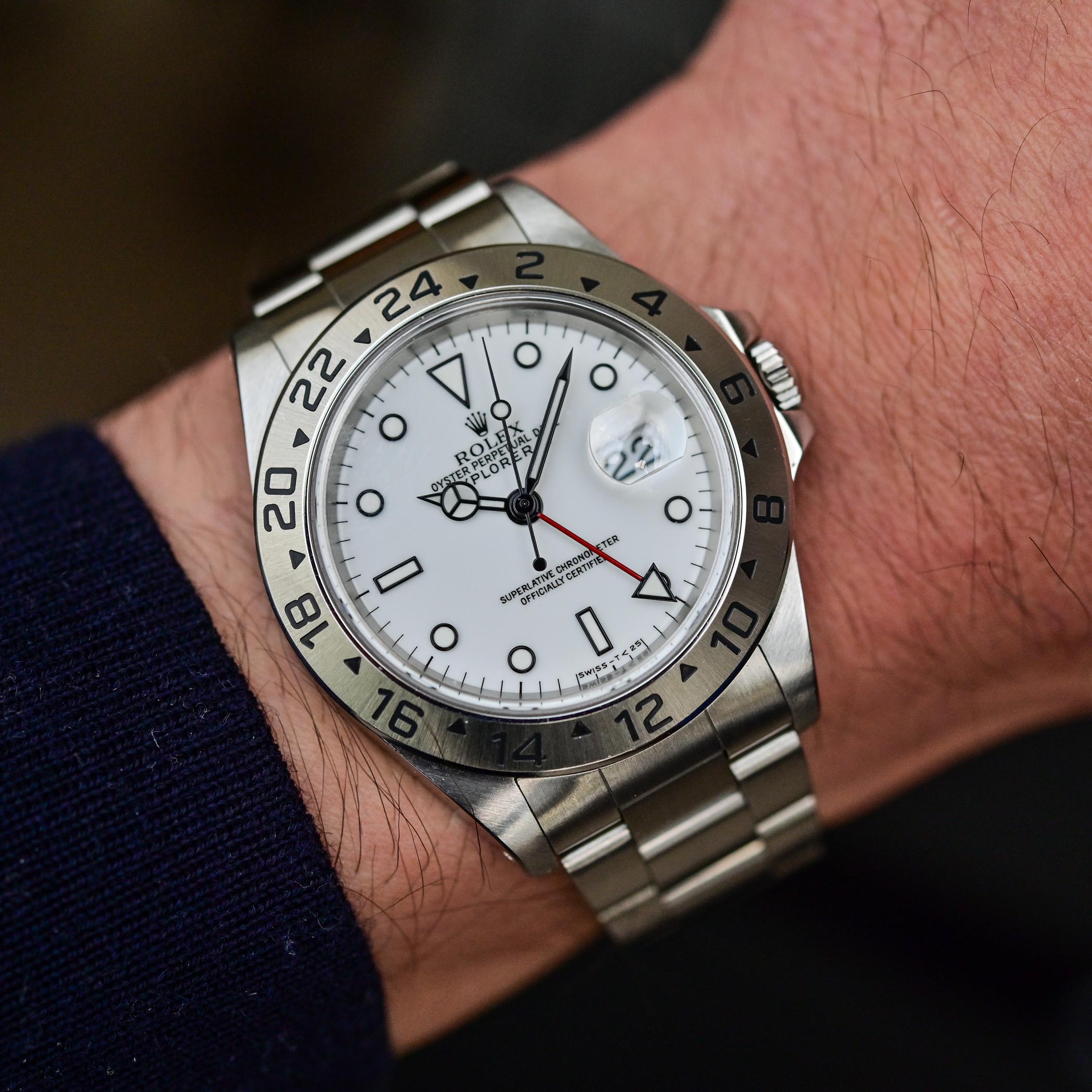



4 responses
It is the watch twin of the Porsche 928.
Nice article about a Nice Watch! However, one detail is not correct: the middel links of Rolex oyster bracelets of this generation are not solid, they are hollow. Which, by the way, makes them more comfortable to wear because they are lighter then modern bracelets.
@Leon – absolutely right. Indeed, the central links aren’t solid (and also just discovered this on the watch…..)
Excellent article well written,is the case the same as the sub from that year ,I like the fact the GMT hand is in red not orange